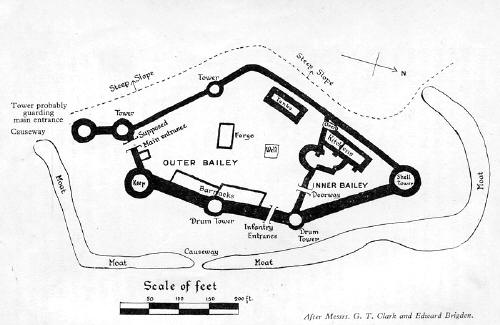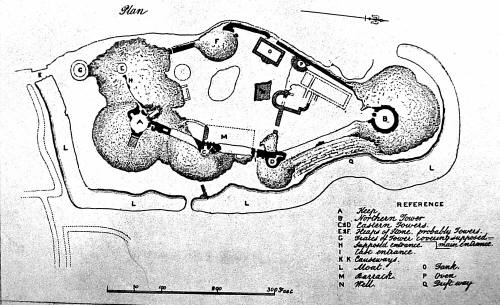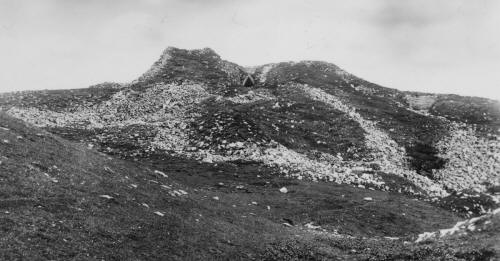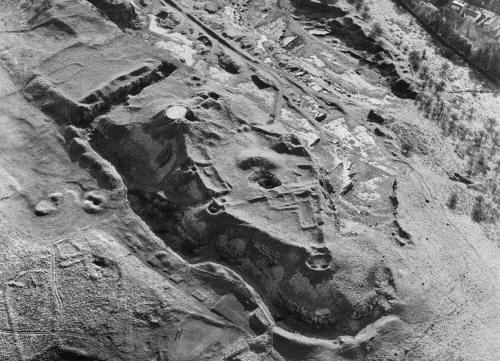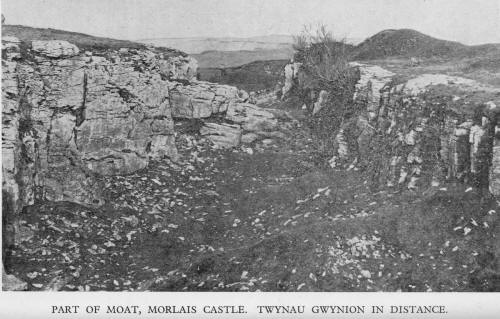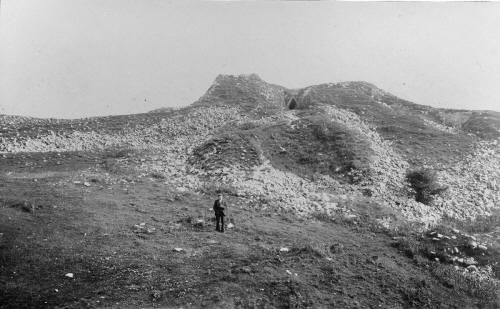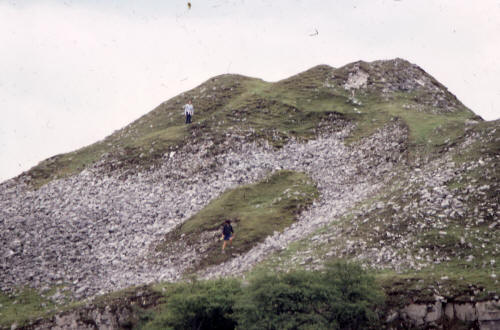Morlais come from mawr meaning great and glais,
stream, and so means great stream.
Today the ruined Morlais Castle still commands a fine
view, it is situated two miles north of Merthyr Tydfil on a limestone
escarpment overlooking the Taf Fechan.
Morlais Castle, was probably built on the site of a
former iron-age fort. There is an interesting print (Shown Below) of the
castle by Buck in 1741 , which shows a ruin that had apparently been
struck by lightning. The remaining ruins of the castle, consisting
mainly of the debris of the towers and the crypt, can still be seen
today.
Originally Morlais Castle was built around 1270 by
the Earl of Gloucester and Lord of Glamorgan, Gilbert de Clare. Its
construction at the farthest reaches of his lands shows that he was
probably planning raids into Vaynor and intending to try to take lands
from Humphrey de Bohun, Earl of Hereford and Lord of Brecknock. It is
thought that the castle was never properly finished. The violent dispute
between these two Earls over the construction of Morlais Castle caused
Edward I to intervene and put both in the Tower of London. The King
himself did not want Morlais castle to be an important stronghold on the
boundary between Glamorgan and Brecknock. and he asserted his Royal
control over these two powerful Norman Lords
.
When the castle was excavated in 1833 by Lady
Charlotte Guest coins from the reign of Edward I were discovered.
Morlais was also excavated by the amateur Victorian archaeologist, G.T.
Clark of the Dowlais Works. Many people have searched this area for
ancient articles and remains.
Over hundreds of years the castle was gradually
dismantled, the stones being removed by farmers to form walls for local
buildings. The surviving crypt gives a clear indication that it was
originally very well built and would have been a splendid large castle
had it not been in the wrong place for its times.
Carolyn
Jacob
